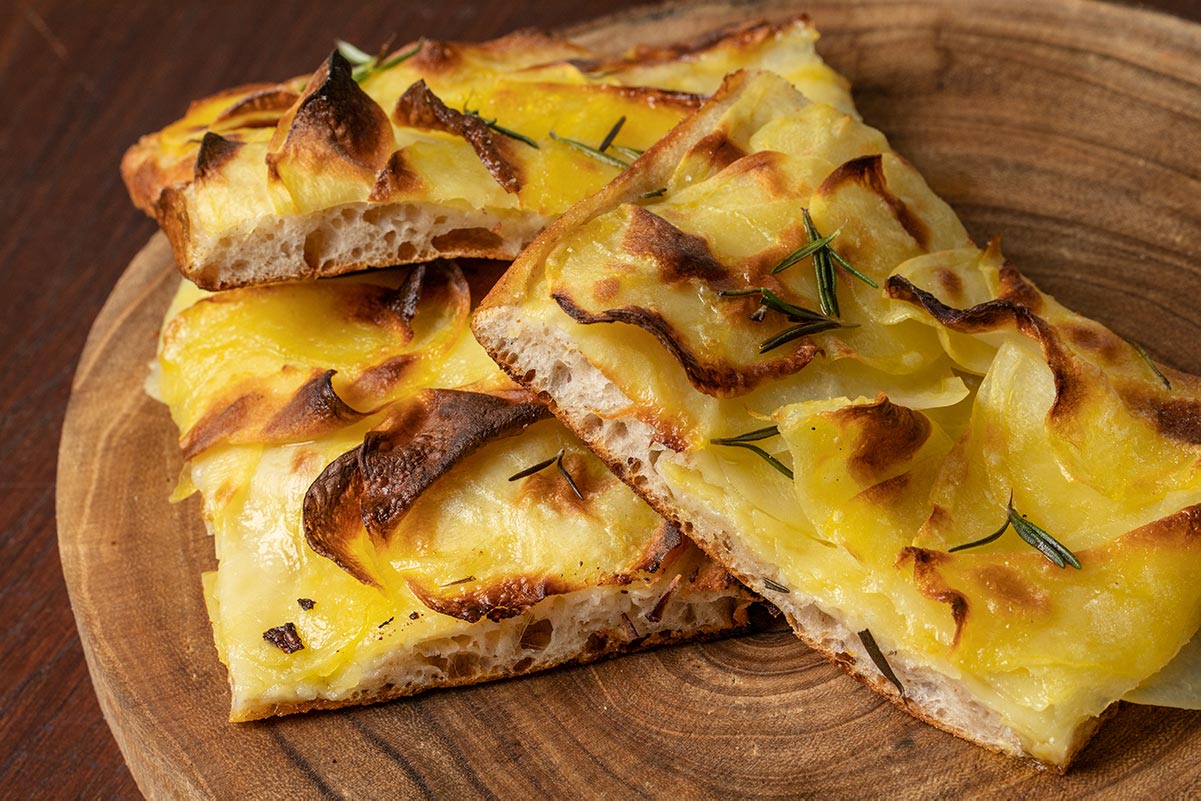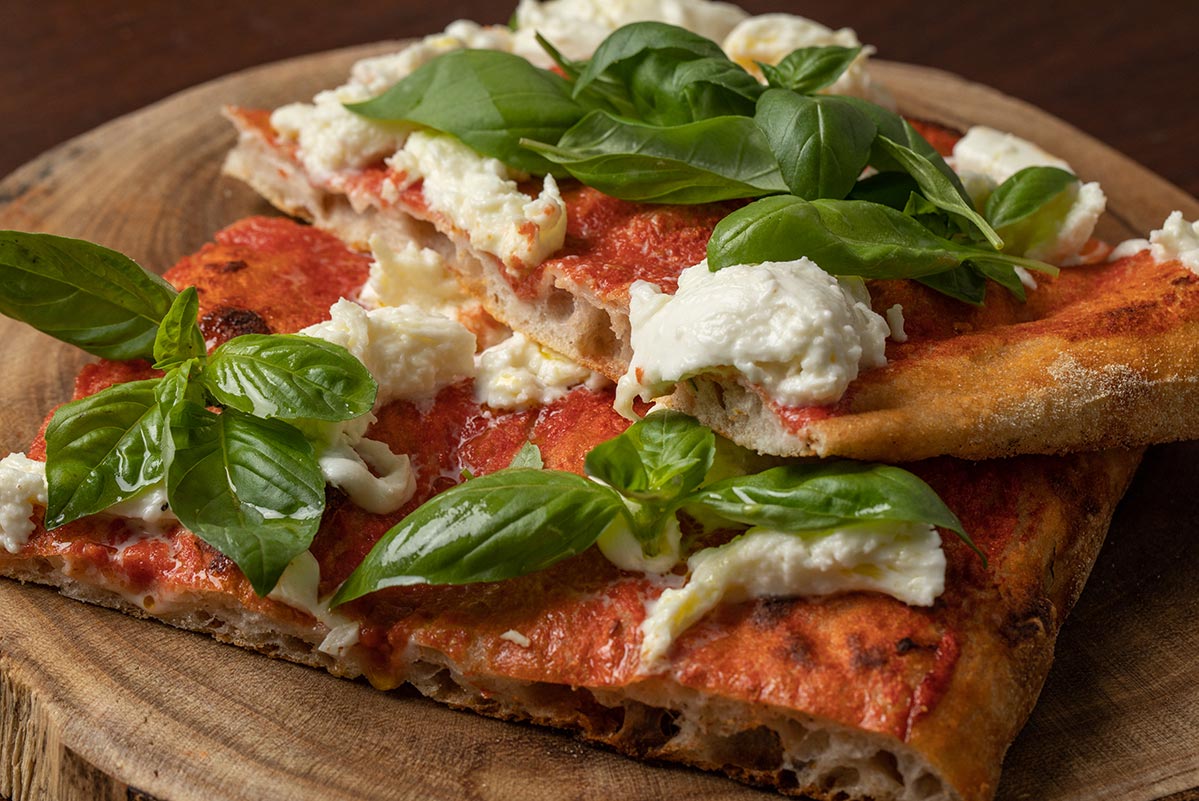360 g Italian type 0, 00 or 1 organic flour
290 g water at 4°c (80% of the weight of the flour)
7 g salt (2.5% of the weight of the flour)
7 g extra virgin olive oil (2% of the weight of the flour)
2 g active dry brewer’s yeast (0.6% of the weight of the flour)
Put the organic flour on a work surface, add the brewer’s yeast and oil and knead. Add the salt and 75% of the cold water (4°C), about 218g and mix with a spoon or in a mixer using a dough hook at the lowest setting until the dough comes away from the sides of the bowl and is compact, smooth, firm, semi-glossy and elastic.
Then start adding the remaining 72 g of water, little by little; wait each time for the dough to absorb the water completely before adding any more, until all the water is absorbed.
The whole kneading process should be completed in about 20-25 minutes. Remove the dough from the mixer bowl, shape the dough to a compact loaf and place it in a oiled Tupperware container. Mark the level of the dough on the outside with a pen so you can check how much it rises. Close the container with its lid.
The time needed to start the rising process will vary according to the temperature:
After this, put the dough in the refrigerator at 4°C for about 44 hours; in general, this is the temperature in the vegetable drawer in the lower part of the refrigerator. The rising time varies from a minimum of 24 hours to a maximum of 72 hours. The dough should more or less double in size.
After it is risen, remove the dough from the refrigerator, flour a work surface and turn the dough out onto it, without touching it or forcing it. The dough will naturally fall thanks to its own weight. Form a loaf shape with a series of letter-folds (first pick up the left side of the dough and fold it a third of the way over the rest of the dough, then pick up the right side and stretch it over the first fold, laying it on top), prior to the second leavening phase known as the appretto, placing the loaf in an airtight oiled container.
The appretto is a second leavening at room temperature for a minimum of 3 and maximum of 4 hours. It allows all the gases to form in the dough and helps to create the right balance between leavening and stretchability.
Turn the oven on to the highest temperature.
Oil lightly and evenly the 30x40cm iron baking tray.
Flour generously a work surface so that the dough cannot stick. Turn out the loaf onto the organic flour, letting into fall on its own without touching it, as otherwise you risk damaging the bubbles from the leavening.
Use the tips of your fingers spread apart and parallel to the dough to gently form the dough into a rectangular shape. Proceed by sealing the edges and then move from the bottom to the top and vice-versa, gently pressing the dough so that the gases in it are evenly distributed.
Then transfer the pizza to the baking tray. Add the topping you prefer; if using mozzarella or fior di latte cheese wait to add until halfway through the baking.
Now the pizza is ready to bake. In a domestic oven, bake at the highest temperature in a conventional oven putting the pizza tray at the bottom of the oven for 4-5 minutes, then turn the heat down to 230°C and transfer the tray to the middle shelf of the oven. If you are adding mozzarella or fior di latter cheese, add before putting the tray on the middle shelf. Bake for another 10 minutes or until the pizza is crispy and the edges are hazelnut brown.
Remove from the oven and transfer onto a rack so it can cool without the bottom getting soggy from the condensation of the steam.
Serve cut into squares.
Some ideas for your pizza in teglia:
Recipe Of The Month – June
Roman-style pizza is baked in a tray (the word teglia refers to the baking dish or tray) instead of individually on the floor of the oven as Neapolitan pizza is. Because of the olive oil added to the dough (Neapolitan pizza has none in the dough), Roman pizza may be either very thin, or, as in this recipe, pizza in teglia, which is thick. It is baked in a rectangular tray and eaten cut into squares.
Popular throughout central Italy and makes a sustaining snack, especially for after school. Potato and rosemary is a classic topping; the potato slices roasting to crisp, frilly and browned, a perfect foil to the tender pizza dough. Another popular topping is tomatoes, onions and capers and there are so many, many toppings, the list is endless. But the combination of crisp-edged potatoes and herby rosemary, all baked into a tender crust, is delectable.


